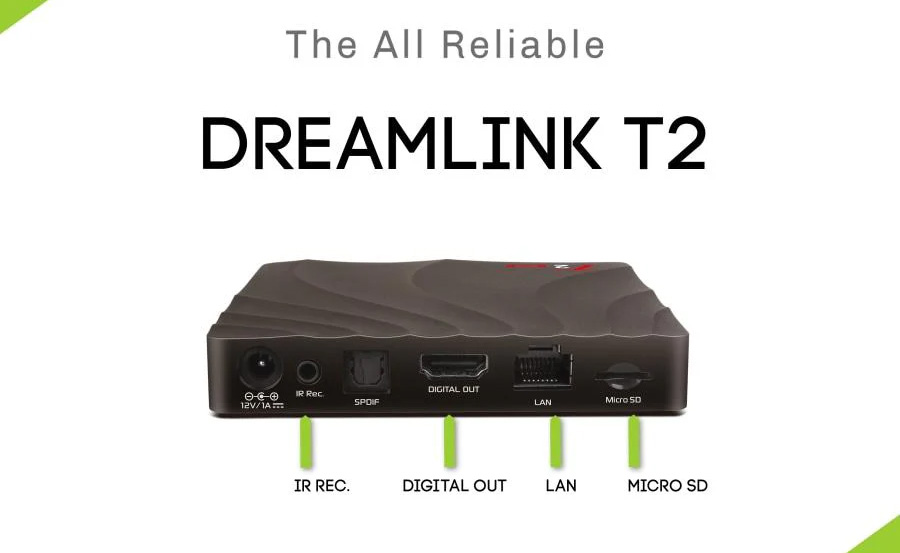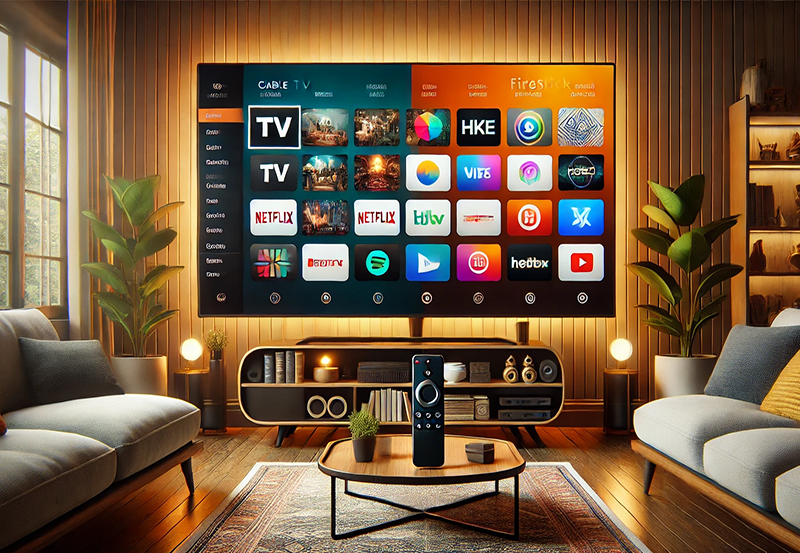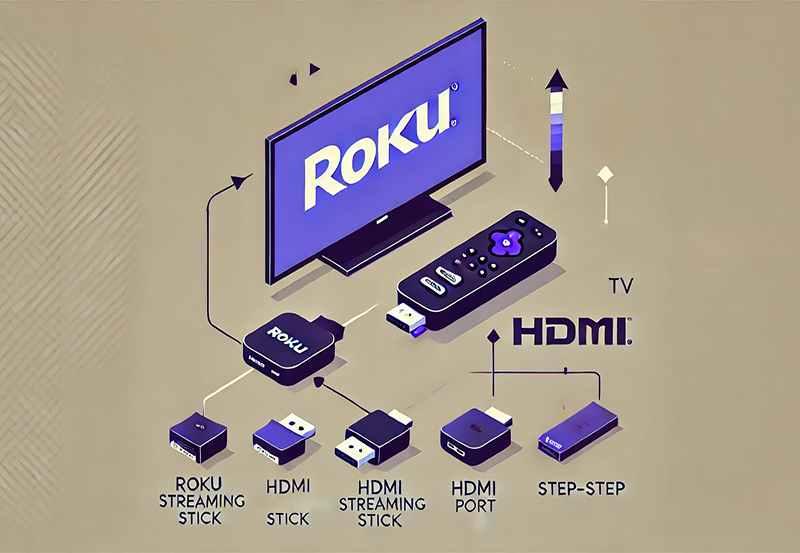Expanding storage on your Dreamlink device can unlock a wide array of possibilities, enhancing your streaming experience to new heights. Whether you’re an IPTV enthusiast, a casual viewer, or a tech-savvy individual, understanding how to make the most out of your device’s potential storage capabilities can be a game-changer.
Understanding Your Dreamlink Device
The Significance of Storage Expansion
When it comes to streaming, storage often plays a crucial role in dictating the quality and fluidity of your viewing experience. Dreamlink devices, renowned for their versatility and user-friendly interface, offer several options to expand storage which can significantly amplify their capabilities. From saving more content for offline viewing to improving the speed of operations, knowing how to expand your Dreamlink storage is quite the digital savvy move.
By broadening your device’s storage, you ensure smoother performance during IPTV trials and gain greater access to Ultimate Streaming Insights, a necessity for heavy consumers of streaming services. This not only helps in alleviating performance bottlenecks but also serves as a foundation for a streamlined digital environment.
Smart Insight:
Never miss a beat with IPTV UK, designed for flawless streaming of your favorite content.
Basic Storage Specifications
Before delving into strategies for storage expansion, it’s essential to grasp the basic specifications of your Dreamlink device. Typically, these devices come with a base amount of storage meant for essential operations and light use. However, the growing demand for more space has urged users to seek out methods to compensate for the limitations posed by factory settings.
Understanding these specifications helps in selecting the right expansion options, ensuring compatibility and optimal performance with applications such as DuplexIPTV. This forms the first step in reaping all the benefits that enhanced storage can offer.
Strategies to Expand Your Dreamlink Storage
Utilizing External Storage Devices
Choosing the Right External Storage
Leveraging external storage devices is among the easiest and most effective methods to expand your Dreamlink’s storage capacity. Devices like USB flash drives and external hard drives provide an immediate boost in space while requiring minimal setup effort. However, not all external options may suit your needs or be compatible with your Dreamlink device.
Here are a few points to consider when selecting external storage:
- Storage Capacity: Opt for a capacity that aligns with your usage habits. Larger storage may support more content, but also comes at a higher cost.
- Compatibility: Ensure the external device is compatible with Dreamlink’s operating system and ports (USB 2.0, 3.0, etc.).
- Speed: Faster storage ensures quicker access to your saved content and applications.
Setting Up the Device
Once you’ve chosen the right external storage, setting it up with your Dreamlink device is a breeze. Simply connect the external device to one of the available USB ports on your Dreamlink, and configure it to extend your internal storage.
Most Dreamlink devices come with a straightforward user interface that guides you through the setup process. You simply need to follow the on-screen instructions, often requiring a quick format before using the new space. This new storage can now serve for downloading, streaming, and running applications.
Cloud Storage Options
Identifying Reliable Cloud Solutions
Cloud storage presents a flexible alternative to physical expansion units. Services like Google Drive, Dropbox, and OneDrive offer users the luxury of storing large amounts of data in a secure, accessible manner. Opting for a cloud solution means fewer worries about hardware failures and mobility restrictions, particularly useful for accessing your content from any device.
Before committing to a cloud service, evaluate factors such as pricing tiers, storage capacity, and encryption standards to ensure you select a service that balances costs and utility effectively. Some providers might also offer free trials, making it easier to test before committing.
Integrating Cloud with Dreamlink
After settling on a suitable cloud option, integrating it with your Dreamlink device involves installing the respective application or accessing the platform via a web browser if the device allows. Once logged in, you can easily upload, download, and stream media for a seamless, cloud-assisted viewing experience.
This integration often boosts your Dreamlink’s capabilities significantly, furnishing you with a vast virtual storage extension ready to house even the richest media libraries that demand huge space.
Optimizing Internal Storage
Clearing Unnecessary Data
Sometimes, the simplest solution is to optimize what you already have. If your Dreamlink device is clogged with unnecessary applications and files, clearing them can free up substantial space and improve device performance. Begin by identifying and removing apps and cache files you rarely use, followed by clearing out-of-date media files.
Optimizing internal storage not only creates additional room but also enhances performance, delivering faster times for navigation and app launches. Consider it a digital refresh that can considerably boost your Dreamlink’s efficiency.
Regular Maintenance and Updates
Moreover, running regular maintenance checks and updates ensures your Dreamlink device operates smoothly. Updates often come with performance enhancements and bug fixes that can indirectly contribute to better storage management. Utilize settings or dedicated applications to perform these checks effectively.
Staying timely with these updates and maintenance not only aligns your device with the latest industry standards but also prolongs its operational lifespan.
Exploring Advanced Technical Solutions
Implementing NAS (Network Attached Storage)
What is NAS?
Network Attached Storage (NAS) systems serve as a sophisticated alternative for storage expansion, allowing multiple devices within a network to access and share stored data efficiently. The implementation of NAS within your digital ecosystem can drastically elevate how your Dreamlink device interacts with stored media and applications.
NAS devices work by connecting directly to your network router, effectively functioning as a centralized storage hub for all connected devices, including your Dreamlink. This accessibility not only simplifies data management but also provides an unparalleled storage capacity.
Integrating NAS with Dreamlink
Integrating NAS involves a more technical setup than external drives but offers greater flexibility and storage options. Ensure your Dreamlink is connected to the same network as the NAS device. With a few configuration settings handled through your device’s system menu, you’ll be able to access NAS-stored content directly.
This integration not only expands storage but also streamlines data sharing and backup processes, making it an invaluable resource for users who regularly handle large media volumes.
Using SD Cards and Internal Upgrades
Considering Internal Modification
For those who are comfortable tinkering with hardware, internal upgrades through SD cards or even memory replacements are feasible routes to expand your Dreamlink storage. However, proceed with caution as opening the device might void warranties.
If you choose this path, ensure the SD card specifications such as class and write speed are compatible with your Dreamlink, providing a durable solution for boosting internal storage.
Installing and Managing Upgraded Storage
Installation requires opening the device, often involving a few screws to access internal components where you can instate your upgraded memory. Once inserted and the device reassembled, power it up and configure the new storage as you would with external devices.
Management involves treating the new internal storage like any other drive, diligently organizing files and applications to maintain optimal performance and accessibility within your enhanced digital ecosystem.
A Creative Goodbye
Venturing beyond dream-esque limits of factory settings empowers users with endless possibilities, transforming your Dreamlink device into more than just a gateway to entertainment. Finding the right balance between cloud, external, and internal options offers an expansive range of flexibility and functionality tailored to every type of user—from casual IPTV watchers to those seeking Ultimate Streaming Insights.
Implement these ideas, and you may find you’ve opened doors to richer experiences, all set to a dreamlike stream of content perfectly suited to your desires.
Frequently Asked Questions

Can I use any USB drive for expanding my Dreamlink storage?
While many USB drives are compatible, it’s recommended to check the specifications for compatibility with your Dreamlink device to ensure optimal performance and avoid connectivity issues.
How do I know my NAS setup is correctly configured for my Dreamlink?
Double-check that your Dreamlink and NAS are connected to the same network, and the necessary permissions and shares are established within your system settings. A smooth connection usually entails quick access to media stored on the NAS.
Is it safe to perform internal upgrades myself?
Internal upgrades should be approached with caution as they may void warranties or lead to other complications. If unsure, consider consulting a professional technician to avoid damaging your device.
What’s the advantage of cloud storage over traditional methods?
Cloud storage flexibility allows access to data from anywhere and avoids the risk of hardware failure, though it often involves a recurring cost and depends heavily on a stable internet connection.
Does cloud storage provide adequate security for my data?
Most cloud providers offer strong encryption to secure your files, but it’s always wise to research the provider’s security measures and user reviews to ensure complete trust in storing your data.
How can I maximize the life of my external storage device?
Regularly backing up data, safely ejecting devices before removal, and avoiding exposure to extreme environments can maximize the lifespan and reliability of your external storage devices.
What troubleshooting steps can I take if my Dreamlink device isn’t recognizing additional storage?
Check your connections, ensure your devices are formatted correctly, and update your Dreamlink software. If problems persist, try a different port or device, or consult the manufacturer’s support for assistance.
Top IPTV Services in the UK: How to Choose the Best One for You





